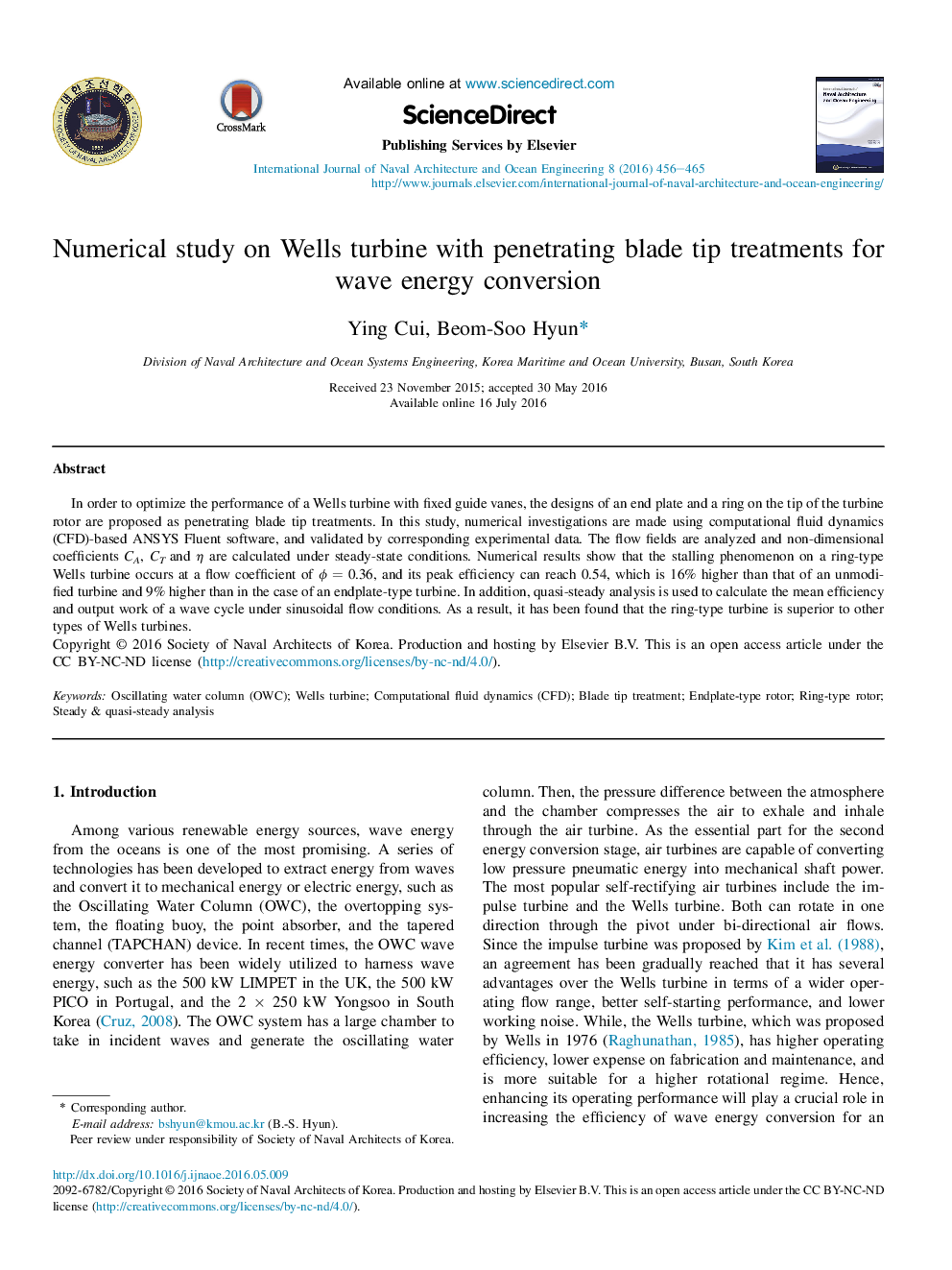| Article ID | Journal | Published Year | Pages | File Type |
|---|---|---|---|---|
| 4451602 | International Journal of Naval Architecture and Ocean Engineering | 2016 | 10 Pages |
In order to optimize the performance of a Wells turbine with fixed guide vanes, the designs of an end plate and a ring on the tip of the turbine rotor are proposed as penetrating blade tip treatments. In this study, numerical investigations are made using computational fluid dynamics (CFD)-based ANSYS Fluent software, and validated by corresponding experimental data. The flow fields are analyzed and non-dimensional coefficients CA, CT and η are calculated under steady-state conditions. Numerical results show that the stalling phenomenon on a ring-type Wells turbine occurs at a flow coefficient of ϕ = 0.36, and its peak efficiency can reach 0.54, which is 16% higher than that of an unmodified turbine and 9% higher than in the case of an endplate-type turbine. In addition, quasi-steady analysis is used to calculate the mean efficiency and output work of a wave cycle under sinusoidal flow conditions. As a result, it has been found that the ring-type turbine is superior to other types of Wells turbines.
